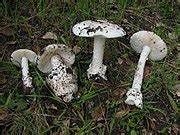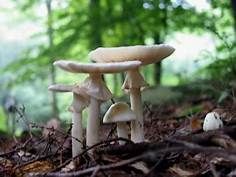"The Amanita magnivelaris fungus".
"El hongo Amanita magnivelaris".


ENG
It is a kind of fungus. They are also called mushrooms. This fungus is a deadly toxic species of fungus. This fungus is called Amanita magnivelaris which is also known as a botanical name.
This Amanita species has many poisonous fungi and this Amanita magnivelaris species is one of the most poisonous fungi. This fungus is commonly known as 'great felt skirt destroying angel'.
The fungi usually look like umbrellas and there are many species of them that come out of the soil and they look white. There are some species of fungi that are found on trees or other things and they are a little different in color.
These types of fungi are a part of botany. There is a little discussion about these in the book Botany. The cap of this fungus is white, viscous when wet, first convex and then planar.
The caps are about 41-120 mm wide and often carry a membrane patch. The gills of this fungus are closely attached to the stem and the gills are white and sometimes look strangely pink.
Then the stem of this fungus becomes narrow and rough type upwards. The stem is about 70 mm. In addition, its spores are elongated and broadly elliptical.
This species is DEADLY POISONOUS.
ESP
Es una especie de hongo. También se les llama hongos. Este hongo es una especie de hongo tóxico mortal. Este hongo se llama Amanita magnivelaris, que también se conoce como nombre botánico.
Esta especie de Amanita tiene muchos hongos venenosos y esta especie de Amanita magnivelaris es uno de los hongos más venenosos. Este hongo se conoce comúnmente como "ángel destructor de faldones de fieltro".
Los hongos suelen parecer paraguas y hay muchas especies de ellos que salen del suelo y se ven blancos. Hay algunas especies de hongos que se encuentran en árboles u otras cosas y son un poco diferentes en color.
Estos tipos de hongos son parte de la botánica. Hay una pequeña discusión sobre estos en el libro Botánica. El casquete de este hongo es blanco, viscoso cuando está húmedo, primero convexo y luego plano.
Las tapas tienen aproximadamente 41-120 mm de ancho y a menudo llevan un parche de membrana. Las branquias de este hongo están muy unidas al tallo y las branquias son blancas y, a veces, se ven extrañamente rosadas.
Entonces el tallo de este hongo se vuelve de tipo estrecho y áspero hacia arriba. El tallo mide unos 70 mm. Además, sus esporas son alargadas y ampliamente elípticas.
Esta especie es mortalmente venenosa.